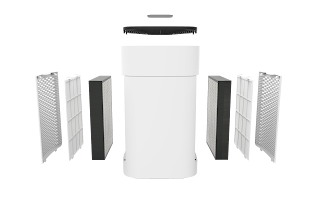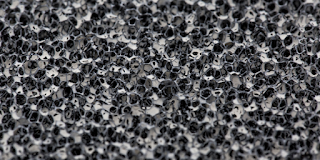What is an air purifier?
An air purifier is a small home appliance used to purify indoor air. It mainly solves indoor air pollution problems caused by renovation or other reasons. Due to the persistence and uncertainty of the release of pollutants in indoor air, the use of air purifiers to purify indoor air is an internationally recognized method of improving indoor air quality. There are many different technologies and media in air purifiers that enable it to provide users with clean and safe air.
The commonly used air purification technologies are: low-temperature asymmetric plasma air purification technology, adsorption technology, negative ion technology, negative oxygen ion technology, molecular complexation technology, photocatalyst technology, TIO2 technology, HEPA high-efficiency filtration technology, electrostatic dust collection technology, and active oxygen Technology, etc.; material technologies mainly include photocatalysts, activated carbon, synthetic fibers, HEAP high-efficiency materials, and negative ion generators.
At present, the existing air purifiers in the domestic market are mostly compound type, that is, a variety of purification technologies and material media are used at the same time. The basic components of the purifier The main components of the air purifier are: enclosure, filter section, air duct design, motor, power supply, and liquid crystal display. The motor that determines the life is the filter section that determines the performance of the decontamination. The deciding whether or not to be quiet is the design of the air duct, the housing of the chassis, the filter section, and the motor. The birth and development of purifiers Air purifiers originated in fire-fighting applications. In 1823, John and Charles Dean invented a new type of smoke protection device that allows firefighters to avoid smoke during fire extinguishing.
In 1854, a man named Johns Tennessee made new progress on the basis of the invention of his predecessors: Through several attempts, he learned that adding charcoal to an air filter can filter out harmful and toxic gases from the air. . During World War II, the U.S. government began conducting research on radioactive materials. They needed to develop a way to filter out all harmful particles to keep the air clean so that scientists could breathe, so HEPA filters came into being.
In the 50s and 60s of the 20th century, the HEPA filter was once very popular and very popular with air-raid shelter design and construction personnel. In the 1980s, the focus of air purification has shifted to air purification methods, such as home air purifiers. Past filters are very good at removing odors, toxic chemicals, and poisonous gases in the air, but they cannot remove mold spores, viruses, or bacteria. New air cleaners for homes and offices can not only clean toxic gases in the air.
It can also purify the air and remove bacteria, viruses, dust, pollen, mold spores, etc. from the air. Nowadays, air purifiers have had a variety of different ways of designing and manufacturing, and each technological change has brought about remarkable results in the improvement of people's indoor air quality. And all this is only one purpose: I hope to purify the indoor air to improve people's quality of life.
About Olansi healthcare Co.,Ltd
Established in 2009, located in Guangzhou City in South China, Guangzhou Olansi Healthcare Co., Ltd is a professional hydrogen water maker and air purifier OEM manufacturer. The products of the company contain pm2.5 air purifier, home air purifier, HEPA air purifier, ionizer air purifier,air purifier with humidifier,room air purifier,hydrogen water machine and so on. All OEM air purifiers are manufactured in accordance with the CE, ROSH, and CB Certification.
More details pls check our website: www olansigroup dot com
Contact:Melody Xue
Email:sales13 at olansi dot com
Wechat:melody001106
Whatsapp/Mobile:+86 138 2478 4081
The commonly used air purification technologies are: low-temperature asymmetric plasma air purification technology, adsorption technology, negative ion technology, negative oxygen ion technology, molecular complexation technology, photocatalyst technology, TIO2 technology, HEPA high-efficiency filtration technology, electrostatic dust collection technology, and active oxygen Technology, etc.; material technologies mainly include photocatalysts, activated carbon, synthetic fibers, HEAP high-efficiency materials, and negative ion generators.
At present, the existing air purifiers in the domestic market are mostly compound type, that is, a variety of purification technologies and material media are used at the same time. The basic components of the purifier The main components of the air purifier are: enclosure, filter section, air duct design, motor, power supply, and liquid crystal display. The motor that determines the life is the filter section that determines the performance of the decontamination. The deciding whether or not to be quiet is the design of the air duct, the housing of the chassis, the filter section, and the motor. The birth and development of purifiers Air purifiers originated in fire-fighting applications. In 1823, John and Charles Dean invented a new type of smoke protection device that allows firefighters to avoid smoke during fire extinguishing.
In 1854, a man named Johns Tennessee made new progress on the basis of the invention of his predecessors: Through several attempts, he learned that adding charcoal to an air filter can filter out harmful and toxic gases from the air. . During World War II, the U.S. government began conducting research on radioactive materials. They needed to develop a way to filter out all harmful particles to keep the air clean so that scientists could breathe, so HEPA filters came into being.
In the 50s and 60s of the 20th century, the HEPA filter was once very popular and very popular with air-raid shelter design and construction personnel. In the 1980s, the focus of air purification has shifted to air purification methods, such as home air purifiers. Past filters are very good at removing odors, toxic chemicals, and poisonous gases in the air, but they cannot remove mold spores, viruses, or bacteria. New air cleaners for homes and offices can not only clean toxic gases in the air.
It can also purify the air and remove bacteria, viruses, dust, pollen, mold spores, etc. from the air. Nowadays, air purifiers have had a variety of different ways of designing and manufacturing, and each technological change has brought about remarkable results in the improvement of people's indoor air quality. And all this is only one purpose: I hope to purify the indoor air to improve people's quality of life.
About Olansi healthcare Co.,Ltd
Established in 2009, located in Guangzhou City in South China, Guangzhou Olansi Healthcare Co., Ltd is a professional hydrogen water maker and air purifier OEM manufacturer. The products of the company contain pm2.5 air purifier, home air purifier, HEPA air purifier, ionizer air purifier,air purifier with humidifier,room air purifier,hydrogen water machine and so on. All OEM air purifiers are manufactured in accordance with the CE, ROSH, and CB Certification.
More details pls check our website: www olansigroup dot com
Contact:Melody Xue
Email:sales13 at olansi dot com
Wechat:melody001106
Whatsapp/Mobile:+86 138 2478 4081


评论
发表评论